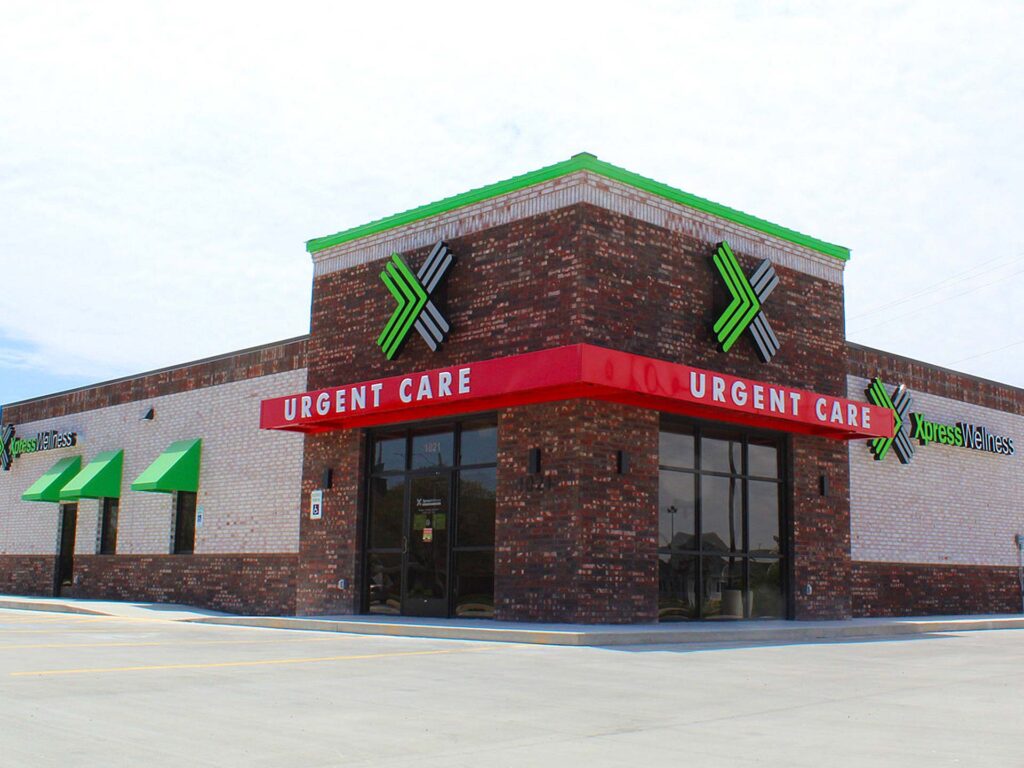The Importance of Urgent Treatment Centers in Linking the Space In Between Primary Care and Emergency Situation Services
Immediate treatment facilities have become a vital part of the health care landscape, effectively attending to the critical requirement for instant medical focus without considering emergency solutions. By providing care for non-life-threatening problems, these centers assist to ease the burden on emergency clinic and improve patient access to prompt therapy. Their expanded hours and varied solutions accommodate an expanding populace looking for alternatives to traditional health care. The developing role of urgent treatment centers raises crucial questions about their assimilation within the wider health care system and the ramifications for client outcomes and resource allocation.
Overview of Urgent Treatment Centers
Urgent treatment facilities have actually come to be a vital component of the healthcare delivery system, supplying easily accessible medical solutions for non-life-threatening conditions. These centers usually operate outdoors basic office hours, offering patients an option to emergency spaces and medical care setups. People looking for immediate treatment frequently existing with concerns such as minor injuries, infections, or ailments that require prompt focus but do not present a prompt threat to life or limb.
Immediate treatment facilities are staffed by a series of medical care experts, consisting of doctors, nurse professionals, and medical professional assistants, that are outfitted to diagnose and treat numerous clinical concerns. They typically feature diagnostic tools such as X-ray makers and lab services, enabling them to provide extensive treatment on-site.
The facility of immediate treatment centers has actually been affected by the increasing demand for prompt medical services in a fast-paced culture, where individuals might battle to secure visits with key care suppliers. Because of this, these facilities intend to alleviate congestion in emergency situation departments, improving overall healthcare performance. Furthermore, immediate care facilities typically act as a bridge between primary care and emergency solutions, ensuring that patients obtain appropriate treatment customized to their specific medical demands.

Advantages of Urgent Treatment Provider
Accessing prompt healthcare is a considerable benefit of immediate care services. These centers offer instant attention for non-life-threatening conditions, successfully minimizing wait times compared to traditional emergency departments. Individuals looking for take care of small injuries, health problems, or immediate wellness problems can obtain treatment without the lengthy delays typically related to medical facility sees.
An additional trick benefit is the prolonged hours of operation. Many immediate treatment facilities are open evenings and weekend breaks, accommodating clients that might not be able to see their key treatment carrier throughout standard workplace hours. This adaptability makes urgent care an available option for those with active routines or sudden health concerns.
Moreover, urgent treatment centers often provide a large range of solutions, consisting of diagnostic screening, X-rays, and fundamental research laboratory services. This thorough technique permits fast medical diagnosis and therapy, improving client satisfaction.
Additionally, urgent care centers are usually much more affordable than emergency clinic, making them an attractive choice for individuals without insurance or those with high-deductible strategies. In general, immediate care solutions play a vital role in giving obtainable, timely, and inexpensive treatment.
Contrast With Health Care
Typically, people typically consider their options between immediate care centers and health care suppliers when seeking medical attention. Both offer important duties in the medical care system, yet they differ significantly in ease of access, expense, and extent.
Medical care service providers are normally the first factor of call for people, concentrating on long-lasting wellness monitoring, preventive care, and chronic disease administration. They use connection of treatment, promoting a patient-provider connection that enables detailed health and wellness analyses and tailored treatment plans. Arranging a consultation can be lengthy, commonly needing days or weeks in development. Urgent Care.
On the other hand, immediate care centers supply prompt take care of non-life-threatening conditions that require prompt attention, such as small injuries or infections. These centers typically run beyond typical workplace hours, fitting patients who might not be able to visit their medical care provider during routine service times. Furthermore, urgent treatment is generally extra cost-efficient than emergency room brows through, making it an appealing choice for those with limited medical care gain access to.
Inevitably, while immediate treatment centers and primary care providers both add to client health, they satisfy unique demands, making it important for patients to figure out which alternative best aligns with their conditions.
Emergency Providers Communication
The interaction between immediate care facilities and emergency services is a vital facet of the health care landscape, specifically when patients deal with circumstances that may intensify in extent. Urgent treatment facilities work as a bridge between medical care and emergency situation departments, resolving non-life-threatening conditions that call More hints for immediate interest. This partnership enhances patient outcomes and enhances source allowance within the healthcare system.
When individuals provide with not deadly however immediate issues, urgent care centers can effectively handle their demands, relieving blockage in emergency situation rooms. Facilities furnished with you could try these out analysis capacities can assist in timely referrals to emergency situation services when a person's condition exceeds the scope of urgent care therapy. This seamless communication aids make sure that clients get the proper level of care without unnecessary delays.
Additionally, efficient communication in between immediate care suppliers and emergency situation solutions is essential. Sharing client information and therapy backgrounds cultivates worked with care, reducing the risk of repetitive examinations and procedures. As medical care continues to develop, the dynamic partnership between immediate care facilities and emergency situation services will play an essential function in improving individual care performance, contentment, and general wellness results within the community.
Future of Urgent Treatment Facilities
As health care needs advance, the future of urgent treatment facilities is positioned to come to be progressively integral to the general clinical ecosystem (Urgent Care). These facilities are most likely to expand their roles by incorporating innovative technologies, such as telemedicine, fabricated knowledge, and electronic wellness record combination. This will certainly improve client accessibility and streamline care control between urgent treatment, health care, and emergency services
Additionally, immediate treatment facilities are expected to expand their solution offerings to consist of preventative care and chronic illness administration. This change will certainly position them as important elements in handling population wellness, reducing the concern on emergency departments, and attending to voids in key treatment schedule.
The expanding trend of value-based care will certainly better accelerate the change of urgent care facilities, motivating them to concentrate on person end results and my blog complete satisfaction. Facilities might additionally take on joint method designs, functioning carefully with specialists and primary treatment suppliers to make sure detailed individual administration.
Final Thought
Finally, immediate treatment facilities serve a vital function in the healthcare system by giving instant accessibility to treatment for non-life-threatening problems, successfully minimizing pressure on emergency situation solutions. Their extended hours and diverse variety of services enhance client benefit and contentment, while also guaranteeing ideal care shipment. As medical care needs remain to evolve, the function of urgent care facilities will likely end up being progressively substantial, more connecting the void in between primary treatment and emergency situation solutions.
The establishment of immediate care facilities has actually been influenced by the increasing need for timely clinical solutions in a busy culture, where people may battle to safeguard visits with key treatment carriers. Additionally, urgent treatment facilities often serve as a bridge in between primary care and emergency services, making sure that people receive suitable care customized to their particular clinical demands.
Several immediate care facilities are open evenings and weekend breaks, fitting patients who may not be able to visit their primary treatment provider throughout conventional office hours (Urgent Care). As medical care proceeds to advance, the vibrant partnership between urgent care facilities and emergency situation services will certainly play an essential duty in enhancing person care performance, complete satisfaction, and overall health and wellness results within the neighborhood
